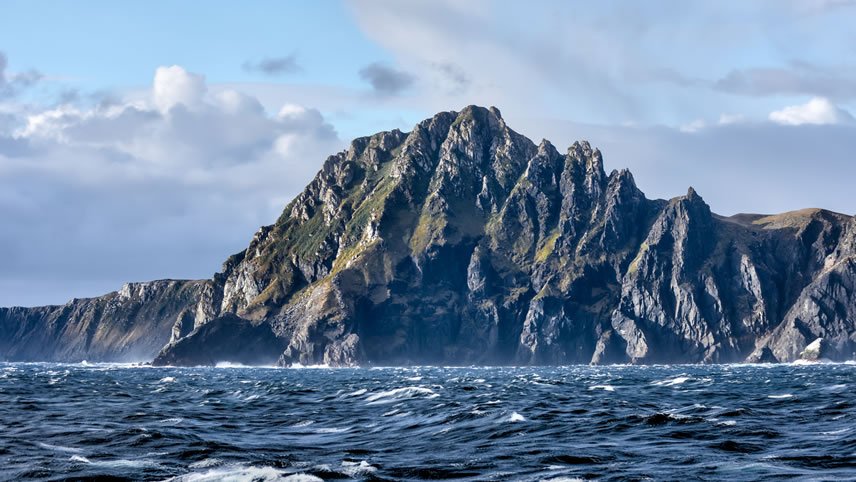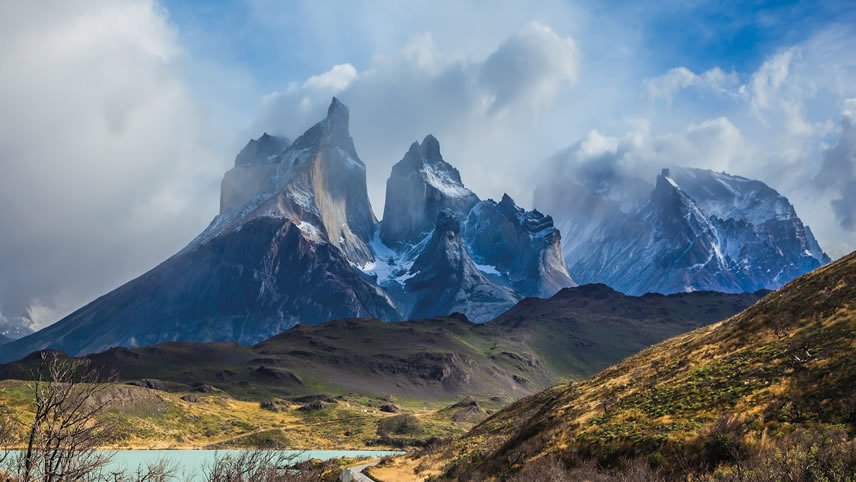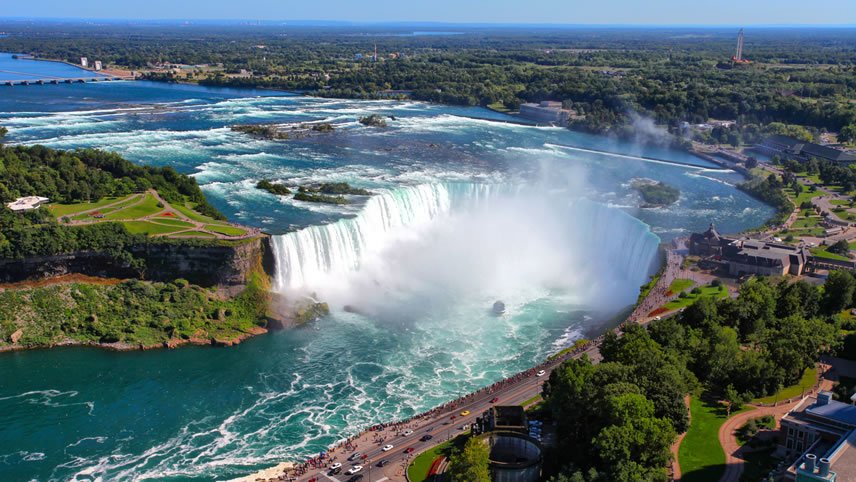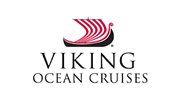Overview
Itinerary
Arrive and check in to your hotel. Buenos Aires, Argentina's cosmopolitan capital, is an eclectic combination of Latin and European influences. The tree-lined streets and postcolonial architecture draw on the city's Spanish, French and Italian heritage, while the many cafés and bodegas and vibrant nightlife are decidedly Argentine. Its barrios, or neighborhoods, exude an intimate atmosphere that belies the city's size. Full of bohemian flair, historic San Telmo's cobblestone streets and Belle Époque–style buildings reverberate with the mesmerizing melodies of the tango.
After breakfast, check out of your hotel and board your charter flight to your embarkation city. Ushuaia is the southernmost city in the world. Its splendid setting, tucked between the Beagle Channel and the southernmost slopes of the Andes, lends it an outpost atmosphere, as do the Antarctic explorers readying for the expeditions that depart from here. Ushuaia is the capital of and gateway to the celebrated Tierra del Fuego, the “Land of Fire,” named by Spaniards upon seeing the constant flames burned by the indigenous Yámana to keep warm. This largely unspoiled region comprises the large island of Tierra del Fuego and countless Chilean and Argentine islands.
Named for 16th-century English privateer Sir Francis Drake, the frigid waters of the Drake Passage stretch for some 600 miles between Cape Horn and Livingston Island in the South Shetland archipelago. As you sail today, attend an informative lecture or watch a film on our 8k laser-projected panoramic screen in The Aula, one of the world's most advanced venues for learning at sea. This indoor-outdoor experience allows nature to take center stage with its retractable floor-to-ceiling windows that unveil 270° views.
At once ethereal and majestic, Antarctica has inspired explorers and adventurers for centuries. In this icy wilderness, marvel at icebergs glimmering in serene bays and mountains cloaked in white rising from the mainland basalt cliffs. These stunning landscapes evoke both utter tranquility as fur seals lounge on a floating sheet of ice, and breathtaking drama as glaciers thunderously calve into the sea. In these cold and nutrient-rich waters, humpback, fin and giant blue whales have been known to greet expedition ships that venture into their habitat.
The Drake Passage has a notorious reputation for being the roughest seas on Earth. Traversing it required braving massive waves, hurricane-force winds and icy conditions that tested the mettle of both sailor and ship. Renew your body, mind and spirit in our Scandinavian-inspired Spa, a Nordic sanctuary of holistic wellness, today while at sea. Whether you unwind in the Sauna, refresh in the Snow Grotto or take a dip in the Thermal Pool, you will feel recharged and revitalized.
Rising above the point where the Atlantic and Pacific Oceans converge, Cape Horn, named for the Dutch city of Hoorn in The Netherlands, is part of the Hermite Islands archipelago. This remote, stark and treeless place is often considered the continent's southernmost point. Soaring from Hornos Island is an enormous prehistoric-looking massif of Jurassic volcanic rock. Atop, stands its historic lighthouse near the water's edge. A beacon of assurance and safety for countless sailors since 1991, it is the world's southernmost traditional-style lighthouse.
The “city at the end of the world” is one of the planet's most breathtaking destinations; Andean peaks, pristine lakes and boreal forests create a dramatic backdrop, surrounding this captivating coastal town. Although Ushuaia lies more than 600 miles north of Antarctica, the city's port is still the closest to the “Last Continent” and the starting point for its exploration. The majesty of Antarctica's landscape attracts visitors seeking adventure, with its packed ice plains, rugged mountains and abundance of wildlife, such as whales, seals and various species of penguin.
Called Cabo de Hornos in Spanish, Cape Horn is a steep rocky headland located off the southern tip of mainland South America on Hornos Island in the Tierra del Fuego archipelago. It marks the northern boundary of the Drake Passage and where the Atlantic and the Pacific Oceans meet. The cape was first rounded in 1616 by Dutch navigator Willem Schouten and Belgian Jacob Le Maire. Navigating the waters around the cape are a challenge because of the area's treacherous winds, large waves and fierce currents, as well as many icebergs.
The pristine waters of the Garibaldi Fjord weave their way through the Alberto de Agostini National Park in Chile, where the Andes mountain range meets the ocean. The region is a UNESCO Biosphere Reserve and its majestic natural wonders are home to an array of wildlife. Its valley walls are covered with ice and floating icebergs drift along with the bobbing heads of seals and sea lions. The Garibaldi Glacier feeds the waters of the fjord, and this retreating 12 square mile spectacle dwarfs any vessel that passes by.
Spanning the border of Chile and Argentina, the Southern Patagonian Ice Field stretches along the spine of the Andes Mountains for more than 200 miles. Chile itself is home to almost 80% of South America's glaciers, covering an estimated 7,700 square miles. These glaciers act as enormous freshwater reserves for the mountain habitats across Patagonia, helping to sustain the region's diverse plants and wildlife.
Punta Arenas was founded as a penal colony by Chile in 1848. Nestled amid spectacular mountain vistas on the eastern shores of the Brunswick Peninsula, it played host to mariners crossing the continent by ship. Europeans followed, searching for newly discovered gold and establishing vast swaths of sheep farms locally and throughout the surrounding region. Over time, Punta Arenas became one of Chile's most important ports as, before the opening of the Panama Canal, it laid on the northernmost transcontinental shipping route.
A pristine paradise of soaring peaks, countless lush islands teeming with wildlife and a tapestry of glaciers and rivers spilling into shimmering waters, the fjords of Chile are heralded as one of the most rugged and untamed places on earth. The crystal waters are a breathtaking sight as they journey through vast ice fields, towering mountainsides and serene fishing villages that hug tranquil shores against backdrops of dramatic forested hills.
The gigantic Patagonian Ice Sheet covered southern Chile in a thick blanket of ice and snow during the last Ice Age. Around 12,000 years ago, rising temperatures caused it to begin melting, carving out the Patagonian landscape as it receded. Today, two vast sections, northern and southern, remain of this ancient ice sheet. Together, they cover more than 5,400 square miles and form the third largest frozen landmass on Earth. At their edges are towering glaciers of blue-tinged ice, whose ever-changing faces create the large icebergs that float in the fjords and channels.
The fjords and channels of Chile were first inhabited by indigenous people who used the wood of the endemic Pilgerodendron uviferum, a conifer tree, to build their canoes and homes. Spanish conquistadors began exploring the region during the mid-16th century, navigating the fjord's internal passageways to avoid the heavy seas and bad weather of the Pacific Ocean. The harsh climate and declining local populations limited colonial expansion, leaving the fjords sparsely populated—a situation that continues to this day.
Puerto Chacabuco is a tiny Patagonian enclave and gateway into the spellbinding beauty of the rugged wilderness. The port was named for the 1817 Battle of Chacabuco, a pivotal moment during the Chilean War of Independence, in which national hero José de San Martín of the Army of the Andes defeated the royalist forces. Jagged rocky peaks with deep-cut gorges, icy-blue glaciers spilling into the sea and pine-green forests clinging to steep slopes dominate this untouched region, one of the most inspiring and breathtaking corners of the globe.
The picturesque Chilean Fjords stretch nearly 1,000 miles from Cape Horn at the South American continent's southern tip to the Reloncaví Estuary just below the city of Puerto Montt. Carved out by receding glaciers starting more than 2.5 million years ago, the fjords are composed of several hundred channels and passages that wind their way past walls of blue ice, dense forests and steep mountain ranges. Its rugged coastline is home to colonies of Magellanic penguins and lazing elephant seals, while its waters welcome dolphins, migrating humpback whales and orcas on the hunt.
Sail Mar Pacífico, meaning “peaceful sea,” dubbed by Ferdinand Magellan when he crossed these waters almost 500 years ago. As you sail, take advantage of the array of delicious cuisine offered on board. You may visit Mamsen's, our casual gourmet deli, any time from early morning to late at night for a taste of traditional Norwegian fare. Or, dine at Manfredi's and savor an authentic Italian meal, with options ranging from Milanese risotto to Tuscan inspired classics.
Chile's modern capital of Santiago is one of the largest cities in the Americas. Its impressive neoclassical, neo-Gothic, art deco and other architecture spans several centuries. Santiago's gateway, Valparaíso, is often compared to San Francisco for its many cerros, or hills. The city prospered as a major port until the opening of the Panama Canal rendered it unnecessary. Quaint Victorian-era architecture recalling its 19th-century affluence and steeply sloped barrios are linked by ascensores, or funiculars, and winding byways. From Los Cerros, the views are spectacular.
Traverse the world's largest ocean, which covers almost 64 million square miles. At twice the size of the Atlantic, the Pacific is an ocean of extremes. As you sail, explore our well-curated Library, tucked in a private alcove of the Living Room, and select from a broad range of titles. Read a book by the Main Pool, a calming oasis in any weather with its retractable roof, allowing for year-round swimming.
Iquique enjoys a scenic locale between the Pacific Ocean and the Pampa del Tamarugal, a vast plateau within the Atacama Desert. This bustling city was once part of Peru and grew prosperous from saltpeter mining. It was ceded to Chile in 1883 after the War of the Pacific. Today, Iquique boasts many architectural treasures around its central Arturo Prat Square, from the stately Municipal Theater and the elegant Casino Español to a Gothic and Moorish-style Clock Tower. The city's well-preserved Georgian-style homes are a picturesque legacy from the 19th-century mining boom.
Sail the Pacific Ocean, its vast expanse of waters covers more than 30 percent of the Earth's surface and touches the continents of Asia, Australia, North and South America. As you sail today, relax in the Explorers' Lounge, inspired by epic journeys of discovery. Marvel at the views through the two-story panoramic windows as you share a cocktail with friends, or settle down to read a book.
Lima was founded in 1535 by Francisco Pizzaro as La Ciudad de los Reyes, or “City of Kings.” It soon grew into the capital of Spain's Viceroyalty of Peru and established the oldest university in the Americas, the National University of San Marcos. One of the most cosmopolitan cities in South America, Lima's extravagant collection of architecture spans the centuries: early colonial, Spanish baroque, neoclassical and Art Nouveau buildings all adorn the cityscape. The historic center, graced with hundreds of balconies built during the viceroyalty era, is a UNESCO Site.
Cross the Pacific Ocean and learn about its fascinating geology, with more than 75,000 volcanoes—many still active—reaching up from its depths. Admire the views as you sail today and enjoy an al fresco dining experience. The Aquavit Terrace serves a range of International fare and casual dining favorites, as well as a range of superb cocktails inspired by our destinations.
Panama City is a gleaming city of high rises on the Pacific and gracefully blends new and old. At once a rousing tribute to international finance and a rich reminder of a colonial past, it is Central America's unparalleled cosmopolitan center. The atmospheric Old Town, the Casco Viejo, straddles a peninsula and hosts some of the nation's most prized cultural and historic treasures, including churches, palaces and plazas. Nearby, one of the world's greatest engineering feats, the Panama Canal, conveys ships along its 48 miles to the Caribbean Sea.
The Panama Canal connects the Pacific and Atlantic Oceans, crossing the narrowest stretch of the Isthmus of Panama. A full transit through the 48-mile-long canal takes around eight to ten hours and passes through the Gatun Lake and the Culebra Cut, an artificial valley that runs through the Continental Divide. An engineering marvel of the 20th century, the crossing passes through a series of locks that lift and lower ships 85 feet from sea level, guided by electric locomotives known as mulas. The Panama Canal transit is a rite of passage and a truly memorable experience.
Sail through turquoise waters where legends of marauding pirates, swashbucklers and tales of hidden treasures were born. Soak up the views from the Finse Terrace, a unique outdoor lounge area named after a famous mountain plateau in south-central Norway. Relax amid your surroundings in comfort, with heated couches and lava rock 'firepits,' allowing you to enjoy the outdoors no matter the temperature, as you admire the dramatic scenery or expansive ocean vistas.
Port Antonio is the capital of Portland Parish and is home to some of Jamaica's most stunning beauty spots. Visitors can enjoy nature in the island's lush rainforests, or soak up the vistas from the shores of one of Jamaica's pristine beaches; Frenchman's Cove Beach and San San Beach are renowned for their stunning beauty and are ideal spots to while away a tranquil afternoon. The island's iconic Blue Lagoon offers a unique bathing experience due to its mix of hot and cold waters, fed by an underwater spring, and provides the perfect place to snorkel or swim.
Man of War Bay is nestled within the serene expanse of the largely uninhabited Great Inagua Island. It boasts a captivating landscape, where turquoise waters lap white-sand shores, framed by lush greenery and rugged terrain. Surrounded by mangroves and saltwater flats, the bay nurtures a diverse ecosystem. Its pristine waters harbor an array of marine life, including vibrant corals and tropical fish. The surrounding wetlands are home to numerous bird species, notably flamingos, which flock to the bay's shores, creating a picturesque scene with their striking pink plumage.
San Salvador, part of the Bahamas archipelago, is a hidden gem blessed with natural beauty and historical significance. Its pristine white sandy beaches and clear waters paint a serene landscape. The island's diverse marine life, from shallow-water coral reefs to blue holes, entices both divers and snorkelers alike, while its untouched landscapes full of lush coastal areas and serene cays attract nature enthusiasts seeking tranquility. According to some historical accounts, the island was also the site of Christopher Columbus's first landfall in the Americas in 1492.
Sail the Atlantic Ocean, divided in half, north to south, by the Mid-Atlantic Ridge. Longer than the Rockies, the Himalayas and the Andes combined, this underwater mountain range is the longest on Earth. Spend a relaxing day at sea to unwind and admire the vistas from your stateroom veranda.
New York City is at once romantic and exhilarating. From the robust streets of Lower Manhattan's financial district to the intimate warrens of Greenwich Village, the city overflows with culture, cuisine and architectural beauty. New York is for everyone. Music lovers marvel at Carnegie Hall or catch a 1920s-style jazz and blues show in Harlem. Romantics board a horse-drawn carriage in Central Park. Art lovers browse the Museum of Modern Art or the Guggenheim. And theatergoers attend the greatest shows in the world on Broadway, amid the glitter of Times Square.
Sail legendary waters, where medieval Europeans believed “there be dragons” beyond the ocean's horizon. As you sail today, savor a range of international cuisine on board. Choose from a variety of international flavors at the World Café, enjoy al fresco dining on the Aquavit Terrace, or regional specialties in The Restaurant.
Halifax exudes a fine European air and lies along the edge of the Atlantic Ocean. Visitors by sea are greeted by the 1758 Sambro Island Lighthouse, the oldest surviving beacon in North America. In the harborside Historic Properties district, grand and charming stone buildings built in the 18th and 19th centuries grace the cobblestone streets. The city grew up around Citadel Hill, where Fort George protected the harbor. The fortress, along with the adjacent stately Halifax Town Clock, has been gloriously restored and preserved.
A brilliant feat of engineering, the St. Lawrence Seaway comprises a series of locks, canals and channels that allow ships and goods to travel from the Atlantic Ocean up the St. Lawrence River to Lake Superior. Seven locks point the way between Montreal and Lake Ontario, detouring past rapids and several dams. The 27-mile Welland Canal lifts ships over the Niagara Escarpment to Lake Erie, sidestepping Niagara Falls. The Canadian-and American-operated waterway is known locally as “Highway H2O” for the traffic and trade it allows.
Prince Edward Island evokes the simplicity of Canada's maritime life, a fertile mix of fishing and farming. In the capital of Charlottetown, tree-lined streets shade restored 19th-century mansions and tidy green parcels dot provincial squares. The island has been molded by rich Scottish and French heritages, as evidenced by the traditional ceilidh, or kitchen party, that still unites friends and neighbors. Besides its picturesque landscapes, the island's biggest draw might be the farmhouse that inspired Lucy Maud Montgomery to write her famous novel Anne of Green Gables.
The village of Cap-aux-Meules—or Grindstone Cape—was named for the headland on Grindstone, one of Quebec's 13 Magdalen Islands. Its French moniker, rarely used in English, is nonetheless its official name. This is the second largest of the Magdalens by area, a low-lying expanse ringed by rugged shores that was inhabited by the Mi'kmaq tribe when they came on a seasonal walrus hunt. The first European to step on this land was Jacques Cartier in 1534. Today, some islanders are descendants of shipwreck survivors and live in houses built out of wood retrieved from the waters.
Sept-Îles—French for 'Seven Islands'—faces the Gulf of St. Lawrence from its northern shore. The city is named for the archipelago it faces. Basque fishermen arrived here to take advantage of the gulf's whaling and cod fishing followed in 1535 by Jacques Cartier, who called the archipelago the 'Round Islands.' Fur trade began during the following century. Before that, the First Nations Innu people called this area home for centuries and still today are a major cultural influence, embracing their spiritual bond with the natural world that surrounds their city on the water.
Saguenay is one of southern Quebec's most cosmopolitan cities. It consists of three boroughs: Jonquière, Chicoutimi and La Baie. Once neighboring towns, they were merged to form the present-day city in 2002. Except for some Inuit and Cree villages, there are no towns due north between Saguenay and the Arctic. Like so many Canadian cities founded amid woodland, Saguenay grew its pulp and paper trade with the late 19th century arrival of the Canadian National Railway. Since then, this resilient town has recovered from a great fire, a landslide and a flood.
Quebec City is by many accounts the most French city in New France. The Old Town's centerpiece, the magnificent Château Frontenac, seems transported from the palatial landscapes of the Loire Valley, and its French-accented streets lead past white-stone buildings that evoke old-world medieval villages. The only remaining walled city in North America outside of Mexico, Quebec City was fortified in the 17th century soon after its founding in 1608. Its strategic setting on the rocky promontory of Cape Diamond gave troops a close view of the St. Lawrence.
Trois-Rivières is the cultural center of Quebec's Maurice region. This picturesque city was established in 1634, the second—after Quebec City, in 1608—to be permanently settled in New France. With its strategic location, it played an important role as all eyes looked west to trade fur with the First Nations peoples. “Three Rivers,” the city's anglicized name, is located at the point where two islands in the Saint-Maurice River break the waterway into three channels before it spills into the St. Lawrence. Today, stately century-old buildings form the core of the Old Town.
A brilliant feat of engineering, the St. Lawrence Seaway comprises a series of locks, canals and channels that allow ships and goods to travel from the Atlantic Ocean up the St. Lawrence River to Lake Superior. Seven locks point the way between Montreal and Lake Ontario, detouring past rapids and several dams. The 27-mile Welland Canal lifts ships over the Niagara Escarpment to Lake Erie, sidestepping Niagara Falls. The Canadian-and American-operated waterway is known locally as “Highway H2O” for the traffic and trade it allows.
Toronto is beloved by many as one of Canada's boldest and most innovative capitals. Hugging the shores of Lake Ontario and facing the picturesque Toronto Islands, it was founded by British loyalists fleeing the American Revolution in 1793. Today the city is a pleasure to explore on foot, whether strolling past the Victorian bay-and-gable homes of Rosedale, or the historic enclave of Wychwood Park, an Ontario Heritage Conservation district. The city's Distillery District is home to North America's largest preserved collection of Victorian industrial architecture.
Toronto is home to a wealth of diverse cultures that each bring their own customs, traditions and food to this cosmopolitan city. More than half of the population were born outside of Toronto and the city's districts represent all corners of the globe; Greektown, Little Italy, Koreatown and Chinatown offer a literal taste of the city's renowned ethnic communities. One of Toronto's historic treasures is St. Lawrence Market, which first operated here in 1803. Today, everything from fresh farmers produce to antiques grace the stalls of its vendors.
Port Colborne proudly proclaims itself the “Gateway to Navigation.” It is also the gateway to North America's largest and most powerful cascade, Niagara Falls. Epic in its scope and volume, the falls hurl 42 million gallons of water down 20 stories every minute. Its mile-wide length straddles the Canadian and US borders and is split by islands into three smaller cataracts: Horseshoe Falls, Bridal Veil Falls and American Falls. Long a storied destination for young honeymooners, today the mighty torrent is a thrill for visitors.
Point Pelee is a pristine area that points into Lake Erie from Ontario, tapering off to a fine point before disappearing into the waters. The peninsula comprises woodlands and the largest freshwater marshes on the Great Lakes. It was proclaimed a national park in 1918 and is further protected by the Ramsar Convention, an international treaty that protects wetlands. Located at the convergence of two major bird migration flyways, about 350 species have been recorded here. Boardwalks deliver visitors into this unique ecosystem of vast, open vistas and wave-kissed shores.
Detroit sits on one of the four straits that link the Great Lakes to the St. Lawrence Seaway and has emerged as a city rich in culture. In 2015, it became the first US city to earn designation as a “City of Design” by UNESCO for its creativity in urban development. Detroit was founded as a fort in 1701 and later grew into the epicenter of the US automobile industry. Today the city is beloved as the birthplace of Motown, a portmanteau of “motor” and “town.” Its waterfront reveals remarkable examples of postmodern and art deco skyscrapers.
Alpena is in the northeastern region of Michigan's Lower Peninsula. The town faces Lake Huron's Thunder Bay and is home to Alpena Light, a brilliant red steel structure built in 1914. After its founding in 1840, fishing and logging were introduced to bolster its economy; today it is home to one of the largest limestone quarries in the world. Two of its architectural gems are listed on the National Register of Historic Places: the art deco County Courthouse and the late-Victorian IOOF Centennial Building, once the city's courthouse.
Steeped in the charms of simpler times, Mackinac Island is a gem of the Great Lakes. Located in the Straits of Mackinac where Michigan's upper and lower peninsulas are closest and Lakes Huron and Michigan meet, this bucolic haven preserves gilded Victorian-era treasures along car-free streets traversed by horse-drawn carriages. The perimeter road is the only state highway in the US that does not permit motor vehicles. More than 80% of Mackinac is protected as a state park, from its Greek Revival Grand Hotel and British-built Fort Mackinac to its preserved wilderness areas.
Milwaukee was first settled by Europeans in 1818, when French-Canadian fur trader Solomon Juneau arrived. German, Polish and Eastern European immigrants followed, bringing with them a long tradition of beer brewing. For several decades in the 20th century, Milwaukee became the world's most prolific beer producer. Today, the city is a vibrant center of art, history and culture. The RiverWalk, a pedestrian walkway along the Milwaukee, is a popular spot for enjoying relaxing strolls or viewing public art installations.
Bid farewell to your fellow guests and journey home. Or spend more time exploring, perhaps joining one of our extensions.
Life Onboard Viking Polaris
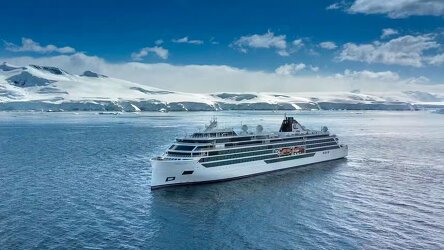
Launched in 2022, the Viking Polaris is Vikings' newest expedition ship, part of a fleet of award winning, state of the art ships built for exploration in sensitive environments. Read more
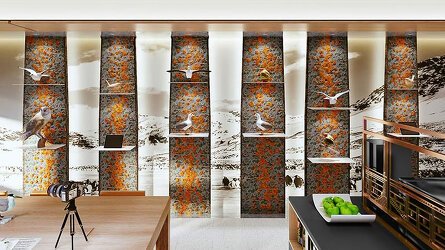
Viking are destination experts. With no casinos or children on board, you can be assured that the focus is firmly on enrichment and education. Read more
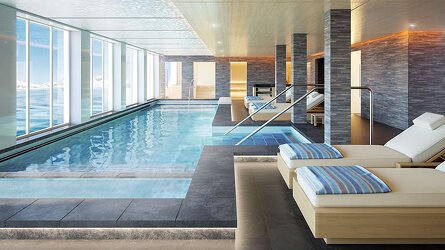
After a day of exploration or just to enhance the relaxation of a day at sea, the on-board Spa will leave you feeling recharged and revitalized. Read more

Viking offer six on board dining options. Beer, wine and soft drinks are available with lunch and dinner at no additional charge of fee. Read more
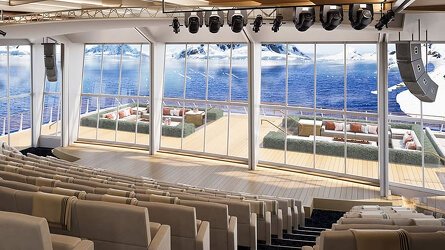
Viking proudly includes all that you need and nothing you do not. A variety of features and services are standard inclusions on your cruise. Read more
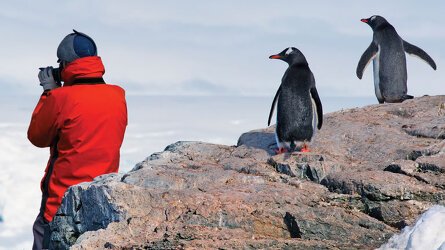
Viking include one complimentary shore excursion in every port of call. Enjoy included experiences around the world. Read more

Trip Reviews (1) Most Recent 'Longitudinal World Cruise VII' Reviews
Brochure

Viking World Cruise Collection (2025-26)
Availability
 USD
Port charges, taxes and fees included.
USD
Port charges, taxes and fees included.
Viking Cruise $25 Deposits!
Tour & cruises prices are per person. Prices shown have savings applied, are subject to availability and may be withdrawn at any time without notice. Pricing and trip details are correct at this point in time, however are subject to confirmation at the time of booking and are subject to change by Viking. For cruise itineraries, cabin images are sourced from Viking. These should be treated as indicative only. Cabin inclusions, upholsteries and room layout may differ to the image(s) shown depending on the ship selected and your sailing dates.
Similar Cruises
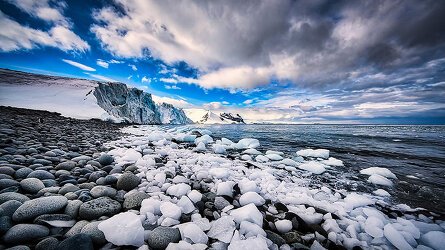
69 Days Buenos Aires Milwaukee
Operated By: Viking
